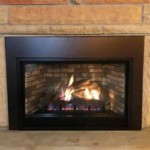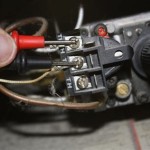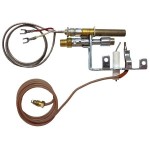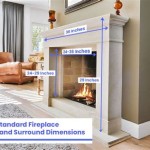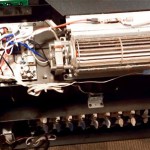Can Electric Fireplaces Look Real? Evaluating Modern Realism
The question of whether electric fireplaces can achieve a realistic appearance is a common one, particularly as these appliances gain popularity as alternatives to traditional wood-burning or gas fireplaces. The perception of "realism" is subjective and multifaceted, encompassing visual elements like flame appearance, ember bed simulation, and overall design, as well as considerations related to heat output and sound. This article will explore the factors that contribute to the realism of electric fireplaces, examining the technological advancements that have improved their aesthetic appeal and discussing the aspects where they may still fall short of replicating the genuine experience of a conventional fire.
Early electric fireplaces often suffered from a cartoonish or artificial appearance, characterized by simplistic flame patterns and a lack of depth. However, contemporary models have undergone significant advancements in design and technology, resulting in a substantial improvement in their ability to mimic the look of a real fire. These improvements extend from the visual display technology to the physical construction of the fireplace itself. A key factor influencing visual realism is the type of technology used to generate the flame effect.
Flame Production Technologies and Visual Realism
Several technologies are utilized in electric fireplaces to simulate the appearance of flames. The most common methods include reflection, projection, and LED technology. Each approach has its strengths and weaknesses concerning visual realism.
Reflection-based systems: These systems typically involve a rotating or oscillating mechanism that reflects light onto a screen or panel. The reflected light creates the illusion of flickering flames. While earlier reflection-based systems were often rudimentary, modern iterations incorporate more sophisticated reflectors and lighting to produce more dynamic and realistic flame patterns. The effectiveness of these systems often depends on the quality of the light source and the complexity of the reflector design. Some models even use mirrors to enhance the depth and dimension of the flame effect. However, the artificiality can still be noticeable if observation occurs at close range, especially with simpler designs.
Projection-based systems: Projection systems use a projector to display an image or video of flames onto a surface. These systems allow for a greater degree of customization and complexity in the flame pattern. High-definition projectors and realistic flame footage can create a visually compelling effect. Some projection-based fireplaces also incorporate features such as adjustable flame color and intensity. A limitation of projection systems is that the viewing angle can affect the perceived realism. The projected image may appear distorted or less convincing when viewed from extreme angles. The quality of the projector and the ambient light conditions also play a crucial role in the overall realism.
LED-based systems: LED technology has revolutionized the realism of electric fireplaces. These systems use arrays of LEDs to create a dynamic and energy-efficient flame effect. Modern LED-based fireplaces can simulate a wide range of flame colors, intensities, and patterns. Many incorporate individual LEDs that flicker independently, creating a more randomized and natural-looking flame. Some higher-end models also feature "dancing flame" technology, which uses complex algorithms to generate highly realistic and unpredictable flame movements. LED systems are generally more durable and energy-efficient than reflection or projection-based systems. They also offer greater flexibility in terms of design and customization. The primary limitation is the potential for a pixelated or artificial appearance if the LED array is not adequately diffused or if the flame patterns are too repetitive.
Across these technologies, the inclusion of features like adjustable flame height, speed, and brightness significantly enhances the overall realism. The ability to customize the flame appearance allows users to tailor the fireplace to their preferences and create a more convincing illusion.
The Importance of Ember Bed and Media
The realism of an electric fireplace is not solely dependent on the flame effect. The ember bed and the media used to simulate burning materials also contribute significantly to the overall visual appeal. A well-designed ember bed can convincingly mimic the glowing embers of a real fire, adding depth and warmth to the fireplace.
Traditional electric fireplaces often used rudimentary ember beds made of plastic or painted metal. These early designs lacked the texture and depth of real embers. Modern electric fireplaces, however, incorporate more sophisticated materials and designs. Some models use molded resin logs with integrated LED lighting to create a realistic glowing effect. Others use crushed glass or acrylic crystals that reflect light, mimicking the shimmering appearance of embers.
The choice of media also plays a critical role. Common media options include faux logs, glass beads, stones, and even driftwood replicas. Faux logs are often made from molded resin and can be incredibly realistic, with detailed textures and coloring. Glass beads and stones can add a modern and stylish touch, while driftwood replicas offer a rustic and natural aesthetic. The arrangement of the media is also important. A haphazard and unnatural arrangement can detract from the overall realism. A well-planned and carefully arranged media bed can enhance the illusion of a burning fire.
Furthermore, some electric fireplaces incorporate features such as pulsating ember beds, which simulate the flickering glow of embers as they are consumed by flames. This subtle but effective detail can significantly enhance the perceived realism. The quality of the materials used in the ember bed and media is crucial. Low-quality materials can appear cheap and artificial, undermining the overall illusion. Higher-quality materials, such as realistic resin logs and finely crafted glass beads, can significantly enhance the realism.
Beyond Visuals: Considerations for Sound and Heat
While visual realism is a primary concern, the overall experience of a fireplace involves more than just sight. The sound and heat generated by an electric fireplace can also contribute to or detract from the perceived realism. Adding to the realism is the inclusion of crackling sounds, similar to what a real fire produces.
Early electric fireplaces were often criticized for their lack of sound. The absence of the crackling and popping sounds associated with a real fire detracted from the overall experience. Modern electric fireplaces often incorporate sound effects to enhance the realism. Some models use integrated speakers to play recordings of crackling fires. These recordings can range from simple loops to more sophisticated soundscapes that include various sounds such as wood burning and embers glowing.
The quality of the sound effects is crucial. Poorly recorded or repetitive sound loops can quickly become annoying and undermine the realism. High-quality recordings and realistic soundscapes can significantly enhance the overall experience. Some electric fireplaces also offer adjustable volume controls, allowing users to customize the sound level to their preferences.
Heat output is another factor to consider. While electric fireplaces are primarily designed for aesthetic purposes, they also function as supplemental heaters. The heat generated by an electric fireplace can add to the overall sense of warmth and comfort, enhancing the perceived realism. Most electric fireplaces use heating coils or infrared heaters to generate heat. The heat output is typically adjustable, allowing users to control the temperature of the room. The ability to independently control the flame effect and the heat output is a valuable feature. Users can enjoy the visual ambiance of the fireplace without the need for heat, which is particularly useful during warmer months. However, the heat generated by an electric fireplace should not be considered equivalent to that of a traditional fireplace. Electric fireplaces are typically designed to heat small to medium-sized rooms.
Ultimately, advancements in technology and design have considerably improved the realism of electric fireplaces. While they may not perfectly replicate the authentic experience of a wood-burning fire, modern models can achieve a remarkably convincing visual effect, enhanced by realistic ember beds, sound effects, and adjustable heat output. Choosing a model employing advanced flame technology, high-quality media, and additional sensory features is critical to maximizing the perceived realism and overall satisfaction.

Which Electric Fireplace Is The Most Realistic Twin Star Internationaltwin International

Electric Fireplace Installation Melbourne Real Flame Installers
.aspx?strip=all)
Top 11 Electric Fireplace Questions Faq Regency

How Do Electric Fireplaces Work Direct

Gas And Electric Fireplaces Are The Future We Asked Design Pros How To Make Them Seem Real Mint

ᑕ❶ᑐ Wall Mounted Fireplace Can Electric Fireplaces Be

ᑕ❶ᑐ Electric Fireplaces Do They Look Real Or Fake

2024 Top 5 Traditional Electric Fireplaces More Realistic Flames This Year

What S The Difference Between A Premium Electric Fireplace Vs Big Box Fireplaces Direct Learning Center

ᑕ❶ᑐ Wall Mounted Electric Fireplaces Safety
Related Posts

